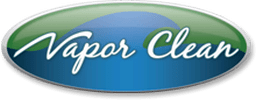What to Know About Steam Cleaners
Posted by Jacqueline Weiss on Feb 02, 2021
Have you heard about the magic of steam cleaning but not sure how to get started? Here's everything you need to know.
Steam cleaners are the ultimate tool for cleaning and disinfecting a multitude of spaces inside and outside your home. Steam cleaning kills 99.99 percent of bacteria, molds and viruses upon contact. It also eliminates dust mites and other allergens.
A big plus for steam cleaners is that they’re safer for your family and for the environment. Because steam cleaners require only water and heat for a naturally clean home, you can say goodbye to buying and storing chemicals in your home.
How Do Steam Cleaners Work?
All steam cleaners function pretty much the same. Once turned on, water is heated beyond the boiling point and the heated vapor comes out of an attachment. This pressurized water vapor not only loosens dirt, it also removes allergens and bacteria, kills mold, dust mites and even bed bugs. Because steam has such small vapor molecules, it’s able to penetrate a surface’s pores for a deep-down clean.
Types of Steam Cleaning Machines
The most popular styles of steam cleaners for home use:
- Handheld Steam Cleaners: These affordable, portable cleaning tools are easily stored when not in use and beneficial for cleaning smaller areas such as your oven or vehicle hubcaps, or for steaming wrinkles out of clothing.
- Steam Mops: These look similar to a stick vacuum, but are intended primarily for mopping floors.
- Canister Steam Cleaners: Although pricier, these tools are the most efficient option for larger scale cleaning because they feature larger water tanks and higher pressure. And they typically come with a wide range of attachments for cleaning a variety different surfaces.
Three things to keep in mind when you’re exploring your options:
- Your Cleaning Needs: Think about how you intend to use your steam cleaner. What attachments, if any, do you need? Is the cord long enough?
- Weight and Size: Pay attention to weight when comparing steam cleaners, especially handheld models. Also consider size. Do you have room to store a canister type steam cleaner?
- Maintenance: If you use tap water in your steam cleaner, some mineral and scale buildup may need to be removed after use. Check consumer reviews for the steam cleaner you’re considering and see if there are complaints that it is difficult to clean.
Things You Can (and Can’t) Clean With a Steam Cleaner
More surfaces than you’d think benefit from steam cleaning. As always, remember to test an inconspicuous area first to make sure the surface can be safely steam cleaned.
These surfaces (usually) can be steam cleaned:
- Upholstery;
- Mattresses (Steam is an effective method for removing bed bugs!);
- Curtains;
- Carpets;
- Floors (Steam cleaners are generally okay on most types of linoleum and tile floors, but not recommended on hardwood or laminate floors. If you’re unsure whether a steam cleaner or mop is safe for your flooring at home, consider researching what your flooring manufacturer has to say.);
- Tiles, such as porcelain and ceramic;
- Metal fixtures;
- Glass and mirrors (A great option for large surfaces to avoid streaks, but make sure the surface is not too cold or the glass could crack.);
- Shower/tub;
- Countertops and sinks;
- Kitchen appliances (Do not use to clean the inside a cold refrigerator or freezer as the use of heat will crack glass and plastic components.);
- Outdoor furniture;
- BBQ grills;
- Vehicles;
- Trash & recycling bins.
Source - https://www.familyhandyman.com/article/what-to-know-about-steam-cleaners/

